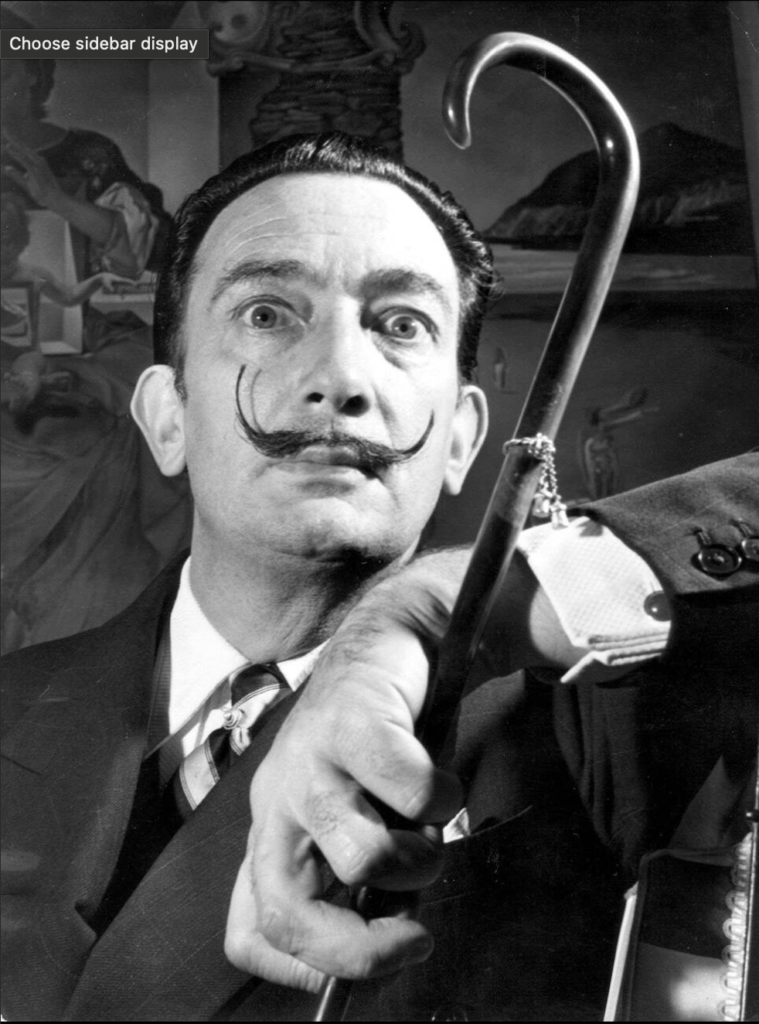“It is said Dalí had sex with his wife once, or a handful of times, or not at all, or that the painter died a virgin.”
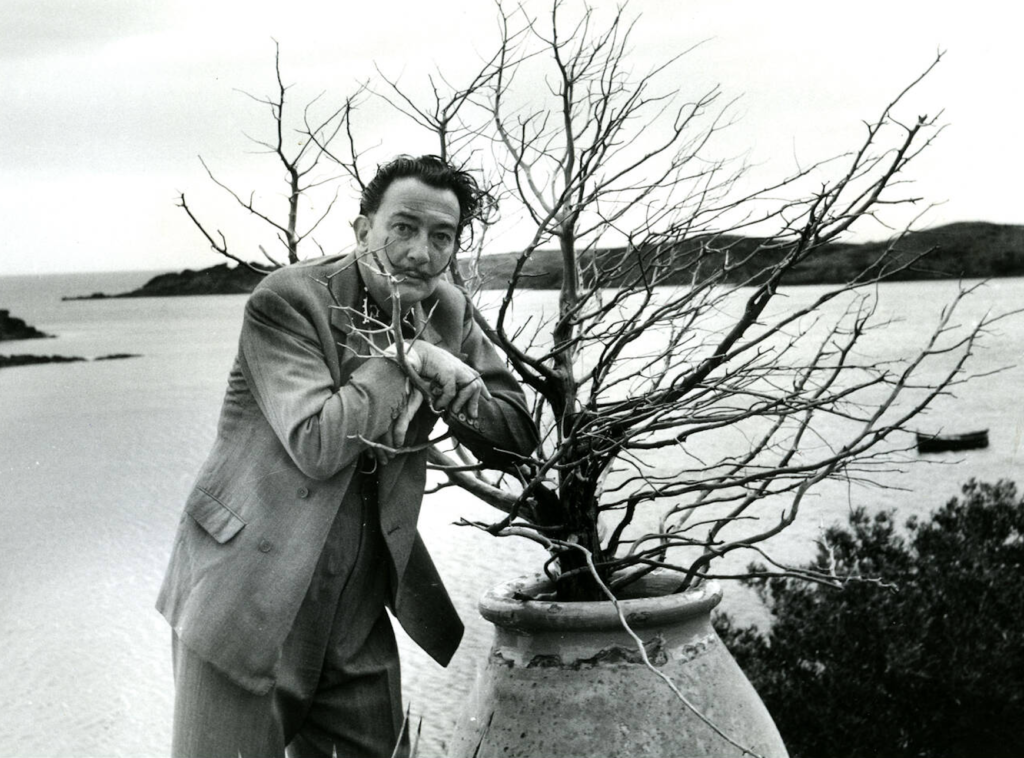
The Spanish Surrealist Salvador Dalí – forever a provocateur – was as wild, glamorous, and grotesque as his paintings finds JANET MERCEL.
A perennial provocateur whose life-theater left no obvious line between art and man, Salvador Dalí remains the rare historical figure who will make you laugh out loud while reading a dry-as-toast academic text at a lifetime of ridiculousness—a life that blurs legend, scandal, rumor, myth, and the outright preposterous!
The artist wrestled with the need to be seen from the tenderest age. At 10, he ran headlong into a wall at school until blood ran down his head, “because no one was paying attention to me.” His father’s idea of instilling safe sex practices in his preadolescent son was to show him wildly graphic images of syphilis-infected females that scarred him for life. When his beloved mother died of uterine cancer when he was 16, the message was clear: women’s bodies were monstrous, his own was not to be trusted, and sex was dangerous—and shameful.
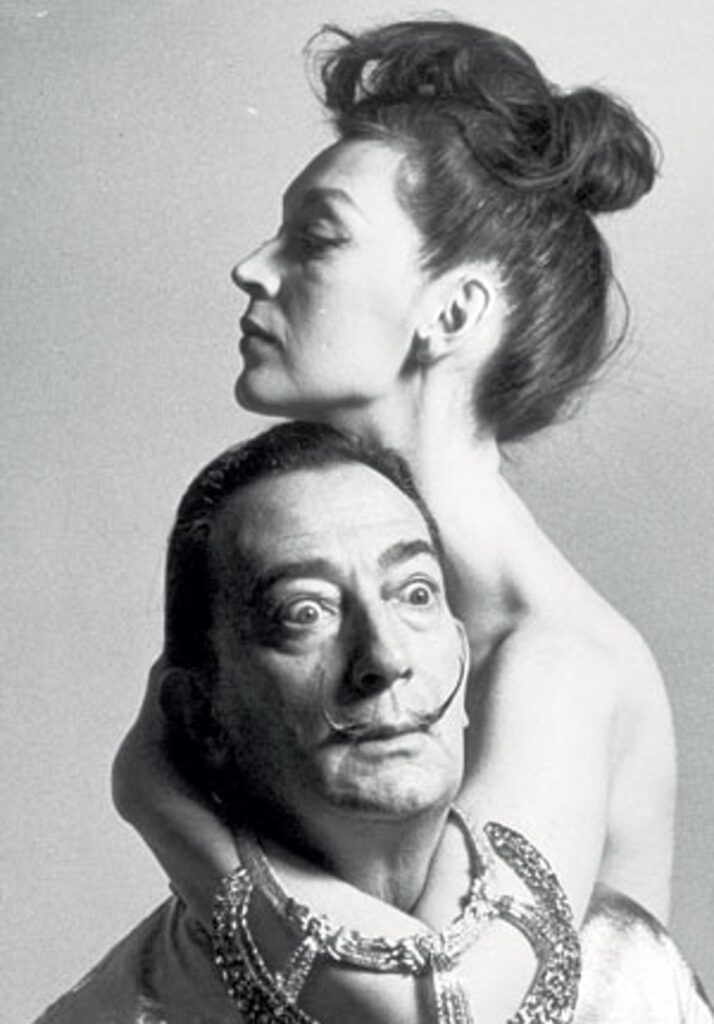
If his romantic life was destined to be tortured, it didn’t stop him from making a few attempts at intimacy. After an art school entanglement with the poet Federico García Lorca, he later dismissed Lorca’s advances as one-sided—despite a body of work devoted to each other and Dalí’s portraits featuring their merging bodies—while admitting: “Deep down, I felt that he was a great poet and that I owe him a tiny bit of the Divine Dalí’s asshole.” The affair ended when Lorca published a book that Dalí found too conventional, but it was only the beginning of a lifetime spent keeping people guessing and gossiping. (This is a man who proudly proclaimed, “Confusion is the greatest form of communication.”).
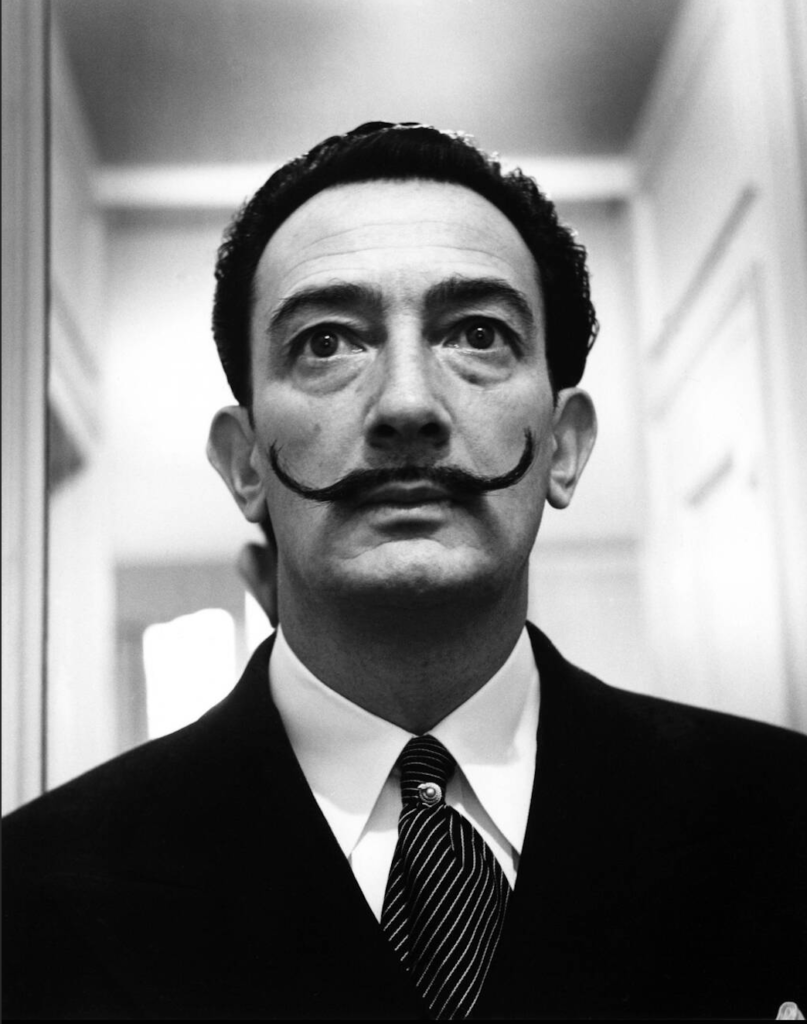
Not long after dumping his boyfriend for being unforgivably basic, Dalí was mired in the heady days of 1920s Montparnasse. Consumed by fear, shame, sexual frustration, and no healthy outlets for expressing it, he found his forever home with the Surrealists. Dalí’s vivid imagination was a breeding ground for the kind of mind that would find The Exorcist a comfort film. His paintings teemed with tongues, lactating breasts, and spurting blood and liquids from every imaginable (and unimaginable) sex organ. The Surrealists were beginning to understand they got more than they bargained for—a 25-year-old hysteric prone to fits of inappropriate scream-laughter triggered by the dirty pictures running through his mind. Fearing that an obsession with excrement made him too much of a deviant, René Magritte and the poet Paul Éluard visited Dalí in his beloved Cadaqués. Afraid he would publicly embarrass them all if he turned out to be literally coprophagic (shit-eating) as opposed to merely coprophilous (shit-loving), they enlisted Éluard’s wife, Gala, to gauge just how deep and authentic his madness really was (à la Mark Wahlberg in The Departed: “How fucked up are you?”).
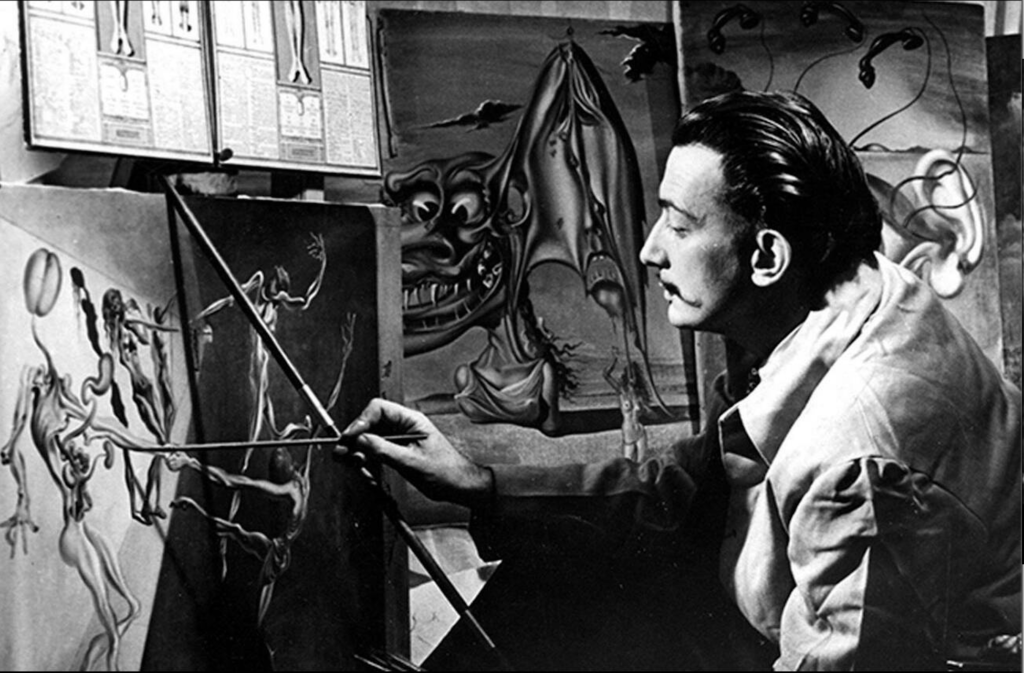
Éluard’s wife was a decade older than Dalí and had already served as a muse to many Parisian artists—if someone had produced a genius streak of work, it was understood he’d probably been sleeping with Gala at the time. She became Mrs. Dalí, his “Godiva,” his “Madonna,” a fetishistic Yoko to his tormented John, and they luxuriated in each other’s perversions. It is said Dalí had sex with his wife once, or a handful of times, or not at all, or that the painter died a virgin. Gala needed sex like she needed air, and never stopped pursuing as many lovers as she deemed necessary. Her husband, meanwhile, was as repelled by literal sex with another human as much as he was drawn to the idea of it. The orgies followed them from New York, to Hollywood, and back to Spain, with Dalí the proud voyeur who preferred simulating his own organ with his walking cane. His paintbrush and his hand were equal extensions of his body—he counted anything that came out of either as creative expression. His favorite partner was a mirror, although he was not without his own companions.
“Amanda Lear overlapped with the more historically elusive Carlos Lozano, a Colombian model and dancer with whom Dalí was also infatuated long-term.”
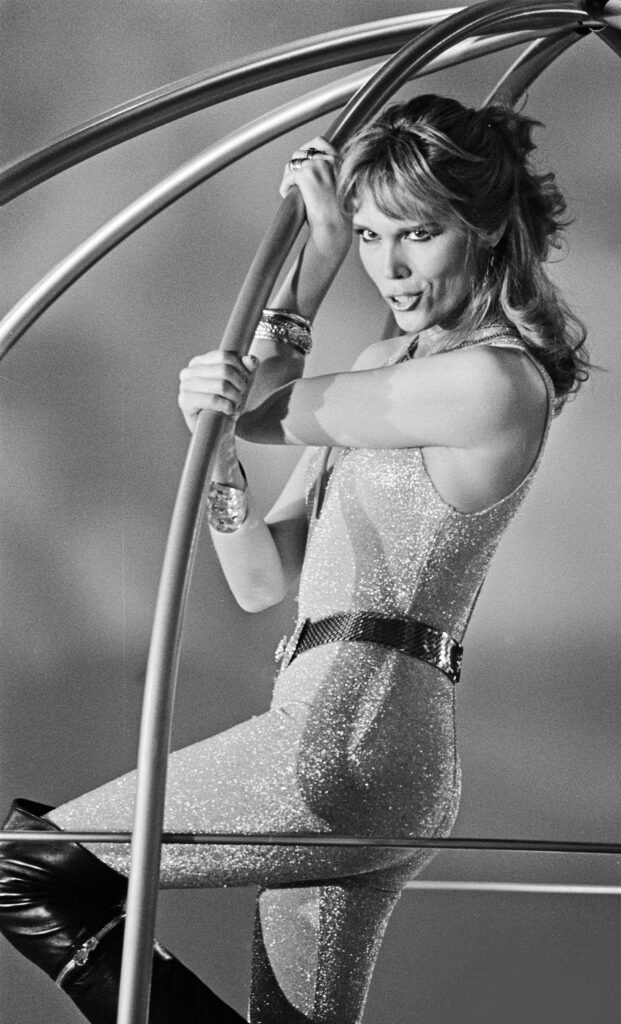
Nearly everything about Amanda Lear, his partner for over 10 years while Gala did her own thing, was a mystery—except that she was a top-earning supermodel. Some say they met in a Paris nightclub while she was dating the Rolling Stones’ Brian Jones. Or perhaps it was years earlier, during her time as a pre-op go-go dancer, and Dalí had paid for her surgery. At various times, one or both claimed she was a trans woman, while at others they derided the notion as pure fiction, a publicity ploy to sensationalize their romance—if that’s what it was. Lear overlapped with the more historically elusive Carlos Lozano, a Colombian model and dancer with whom Dalí was also infatuated long-term. It’s nearly impossible to get a straight answer about anyone’s arrangement, although things evolved enough for Lear to become affianced to Bryan Ferry, and then start dating David Bowie.
In the fever dream of myth and reality that was Dalí’s life, to find someone who remembers the scene firsthand—and can recall it—is to find a unicorn. Peter Dunham, the Los Angeles-based interior designer, was the child who lived next door to this stage of eccentricity in Cadaqués, where his family had to park their boat by Dalí’s house to reach their own. “I never really realized until Carlos Lozano wrote a memoir that I was the only child allowed into Dalí’s inner sanctum,” he recalls. The artist would sit on his throne and gift the fascinated, eight-year-old Dunham with autographs when he visited. In his 20s, when returning for drinks and parties—the more sedate ones, perhaps—the guests gathered in a circle, Dalí and Gala joined last for their dramatic entrance, always with the posed flamboyance and theatricality of Surrealism. The final impression? “I’ll always remember the vision of him and his wife, Gala, getting on their cadmium-yellow boat and cruising into the sunset.”
